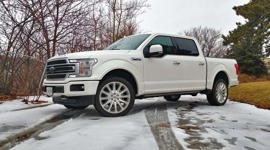Toyota has revealed technical details of new powertrain components designed for its TNGA (Toyota New Generation Architecture) platform, including a 2.0L engine, revised hybrid drive and AWD systems and a continuously variable transmission (CVT) the company claims is the industry's first to feature gear drive for low-speed operation.
The new CVT is primarily belt driven, like all such transmissions, but uses a "launch gear" for acceleration from a full stop, which Toyota says will improve fuel efficiency and throttle response. The manufacturer says the use of that single low-range gear allowed it to reserve belt-driven operation for higher speeds, where it's most efficient.
Also among the new technologies is a 2.0L four-cylinder engine that is the latest member of the Dynamic Force engine family first seen as a 2.5L in the 2018 Toyota Camry. The 2.0L will be optimized for both gasoline and hybrid vehicles, and will achieve claimed world-leading thermal efficiency levels of 40 and 41 percent, respectively, thanks to high compression ratios of 13:1 for gas vehicles and 14:1 for hybrids. At the moment, most gas engines achieve about 25 percent thermal efficiency, though the Prius's motor is about 40 percent efficient.
That approach follows the lead of Mazda's SkyActiv engines: its 2.0L and 2.5L engines share a 13:1 compression ratio.
The new engine uses Toyota D4-S fuel injection system, which features both direct and port injection to help prevent the carbon build-up that has proven a common flaw in direct injection engines. Toyota says the motor will make 169 hp and 151 lb-ft of torque for gasoline vehicles and about 143 hp and 133 lb-ft in hybrid form.
Next on the list is a new hybrid system to go with that 2.0L engine that Toyota says is based on the current Prius's driveline and was conceived to rely more on battery power in order to reduce engine speed during acceleration.
It features a smaller battery with the same storage capacity that will deliver electricity to a motor good for 107 hp and 149 lb-ft of torque.
Toyota will also roll out two new AWD systems. One is a torque-vectoring setup for gasoline-powered vehicles conceived to improve on-road handling and off-road traction, and incorporating a disconnect function to reduce fuel consumption when the car is running in 2WD mode.
Hybrid vehicles will get a bespoke AWD system that, as in current Toyota AWD hybrids, drives the rear wheels electrically, but will deliver 30 percent more torque to the rear wheels.
There is also a new six-speed manual transmission developed primarily for the European market that is lighter and smaller and uses "intelligent manual transmission" controls to "automatically adjust engine rotations when changing gears," which sounds to us like a rev-match system for the purpose of reducing drivetrain recoil and improving shift quality.
Toyota says that within five years, 80 percent of its vehicles sold in Japan, North America, Europe and China will use these TNGA powertrain components, which it estimates will reduce carbon dioxide emissions by at least 18 percent.







